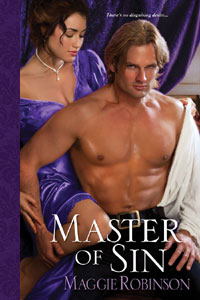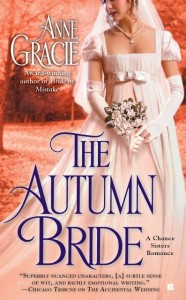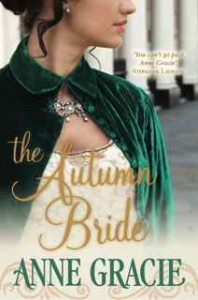 Our guest today is multi-published English author Portia da Costa, whose witty, sexy, mischievous writing style is an absolute delight. She’s here to talk about the Ladies Sewing Circle. Sounds very respectable, doesn’t it … over to you, Portia. First, tell us about the Ladies Sewing Circle series.
Our guest today is multi-published English author Portia da Costa, whose witty, sexy, mischievous writing style is an absolute delight. She’s here to talk about the Ladies Sewing Circle. Sounds very respectable, doesn’t it … over to you, Portia. First, tell us about the Ladies Sewing Circle series.
The Ladies’ Sewing Circle is one of those happy accidents really. I never really meant to write a series, but the editor liked my first Victorian story and suggested that I write some more. The Circle is a group of fairly well to do Victorian women who meet regularly, with the ostensible purpose of practicing their sewing skill, taking tea and exchanging a bit of polite social chitchat. However, once they get together, not a lot of actual sewing goes on and the chitchat is far from polite, because they’re all too busy gossiping about scandal and comparing naughty sexual stories and fantasies. I think the group probably started out innocently enough, but it gradually grew bawdier and bawdier, especially when Madame Sofia Chamfleur became its unofficial grande dame and leader.
 In A GENTLEWOMAN’S PREDICAMENT, as Mrs. Sofia Harewood, she’s an inquisitive widow who yearns to enjoy the bedroom pleasures she never really experienced with her late husband. Fortunately, a friend at the Circle knows just the place for her, and that’s the House of Madame Chamfleur, a discreet establishment for ladies in search of erotic fulfillment. Sofia pays a visit to the House, and to cut a long story short, it’s everything she’d hoped for and more. And to her surprise and delight, “Madame” isn’t a Madame at all and Sofia ends up marrying him!
In A GENTLEWOMAN’S PREDICAMENT, as Mrs. Sofia Harewood, she’s an inquisitive widow who yearns to enjoy the bedroom pleasures she never really experienced with her late husband. Fortunately, a friend at the Circle knows just the place for her, and that’s the House of Madame Chamfleur, a discreet establishment for ladies in search of erotic fulfillment. Sofia pays a visit to the House, and to cut a long story short, it’s everything she’d hoped for and more. And to her surprise and delight, “Madame” isn’t a Madame at all and Sofia ends up marrying him!
 The second story, A GENTLEWOMAN’S RAVISHMENT, features Prudence Enderby, one of the most incorrigible members of the Circle, whose dearest fantasy is to be abducted and ravished by a ruthless stranger. Needless to say, the new Madame Chamfleur, Sofia, is able to make that dream come true for her. A GENTLEWOMAN’S PLEASURE and A GENTLEWOMAN’S DALLIANCE are stories featuring other Circle members, Lucy Dawson and Mary Brigstock. Both these ladies have a daringly sensual encounter to recount to their friends over the needlepoint and the cups of Oolong.
The second story, A GENTLEWOMAN’S RAVISHMENT, features Prudence Enderby, one of the most incorrigible members of the Circle, whose dearest fantasy is to be abducted and ravished by a ruthless stranger. Needless to say, the new Madame Chamfleur, Sofia, is able to make that dream come true for her. A GENTLEWOMAN’S PLEASURE and A GENTLEWOMAN’S DALLIANCE are stories featuring other Circle members, Lucy Dawson and Mary Brigstock. Both these ladies have a daringly sensual encounter to recount to their friends over the needlepoint and the cups of Oolong.
 IN THE FLESH is the first Sewing Circle novel, and it’s the story of Beatrice Weatherly, a newcomer to the group, and young woman who’s fallen into societal disgrace by posing nude for photographs. Beatrice accepts that her ruin is her own fault, but never one to feel sorry for herself, she makes the best of a bad job by accepting a scandalous “indecent proposal” from a devastatingly handsome and wealthy ladies’ man, Edmund Ellsworth Ritchie. He’s a friend of the Chamfleurs, and he’s fallen head over heels in lust with Beatrice after seeing her sensuous poses. But what starts out as an indulgent affair and a business arrangement quickly becomes much, much more… and Beatrice and Edmund must face both their deepening feelings for each other and a horrible tragedy from his past that haunts the present and their future together.
IN THE FLESH is the first Sewing Circle novel, and it’s the story of Beatrice Weatherly, a newcomer to the group, and young woman who’s fallen into societal disgrace by posing nude for photographs. Beatrice accepts that her ruin is her own fault, but never one to feel sorry for herself, she makes the best of a bad job by accepting a scandalous “indecent proposal” from a devastatingly handsome and wealthy ladies’ man, Edmund Ellsworth Ritchie. He’s a friend of the Chamfleurs, and he’s fallen head over heels in lust with Beatrice after seeing her sensuous poses. But what starts out as an indulgent affair and a business arrangement quickly becomes much, much more… and Beatrice and Edmund must face both their deepening feelings for each other and a horrible tragedy from his past that haunts the present and their future together.
The second Ladies’ Sewing Circle novel is entitled DIAMONDS IN THE ROUGH, and will hopefully be published later this year or early next year. Adela Ruffington is the Circle member in the spotlight this time, and the story describes her love/hate relationship with her distant cousin Wilson Ruffington, who’s both a scientific genius and heir to all the family’s fortune. This strong willed and mercurial pair must weather the stormy waters of a marriage of convenience on their way to eventual happiness.
What was it like making the transition from contemporary to historical?
It was very exciting, as well as a little scary initially. I’d always told myself I probably couldn’t write a historical novel, because I wasn’t a history scholar. But when I was encouraged to try, I really enjoyed the experience, and found it wasn’t nearly as difficult as I’d feared, because over the years, I’d subconsciously gathered a lot of the historical background I needed, through my longstanding interest in all things Victorian.
What is it that fascinates you about the Victorian period?
Lots of things about the Victorian period appeal to me. The later years are my favorite part of the era, from around 1887 onwards, and I think that time in particular was an age in transition, especially for women, who were starting to see that they could be educated and independent, have rights, and pursue other kinds of work than just domestic service. The vote was a long way off yet, but women were definitely seeing as a goal to be achieved.
And, of course, the late Victorian fin de siècle was a very naughty time too, as the more risqué side of society emerged from the prim, family orientated façade of the middle years. Notorious figures like Oscar Wilde and Aubrey Beardsley and Sarah Bernhardt shone in the arts and ‘It’ girls like Lily Langry were idolized as Professional Beauties. Even the sinuous sultry, curves of 1890s Art Nouveau were an expression of eroticism in themselves.
I think what captivates me most about the period though, is the fact that despite it being a historical era, and thus an “unknown country”, we’re still very much in touch with it too. In the area where I live we’re surrounded by Victorian architecture, both great and domestic, and our British television has always provided a rich wealth of dramatizations of Victorian classics, all of which make it easy to step back in time. I think I’ve watched the Granada Television Sherlock Holmes series so often that it almost feels like 221B Baker Street is my second home. The late Victorian era is also linked to us by the advances in technology that were taking place then. The Victorians loved their cameras, so we see them as they were in their photographs, but in the period I’m writing about, sound recording and film were being developed too. I get shudders when I hear a recording such as this one of Big Ben and know that the announcer is an actual Victorian speaking to me from 1890, the year when Beatrice Weatherly and Edmund Ellsworth Ritchie meet. And it’s the same when I see this little clip, just a couple of seconds filmed by Louis Le Prince at Roundhay Park, not too far from where I live, in 1888. These moments aren’t from a costume drama; these are real Victorians too, goofing about in a garden for the camera, and I find that incredibly moving.
What did you find out in your research that surprised you?
 Well, it’s not so much a surprise, more a happy, unexpected discovery, but in the course of watching Victorian set movies, I found Topsy-Turvy, and to my astonishment, I realized how much I love Gilbert and Sullivan. I’d never paid much attention to their operettas until then, and long ago in my junior school years, I’d actively disliked them because the whole school seemed to go G&S crazy for the annual production. However, coming to the music later, I was just blown away by the gorgeous melodies, the clever lyrics and smart social commentary, and the sheer, energetic artistry and bravura of Gilbert and Sullivan. I’m no singer, but when nobody is about, I’ve been known to trill along to “A Wand’ring Minstrel I”!
Well, it’s not so much a surprise, more a happy, unexpected discovery, but in the course of watching Victorian set movies, I found Topsy-Turvy, and to my astonishment, I realized how much I love Gilbert and Sullivan. I’d never paid much attention to their operettas until then, and long ago in my junior school years, I’d actively disliked them because the whole school seemed to go G&S crazy for the annual production. However, coming to the music later, I was just blown away by the gorgeous melodies, the clever lyrics and smart social commentary, and the sheer, energetic artistry and bravura of Gilbert and Sullivan. I’m no singer, but when nobody is about, I’ve been known to trill along to “A Wand’ring Minstrel I”!
Do you find UK and US readers have different expectations in erotic romance? How about editors?
I’d never thought about it, to be honest. I just hope that what I write works for both readers and editors wherever they live, and I do my utmost to produce a story that’s well written, grabs the imagination, and has sympathetic, believable characters.
What’s your writing process?
Now I’m laughing. I wouldn’t dignify my way of working with the term “process”. Ideas come to me gradually and sort of gather together until I’ve got a rough idea of the story. Then I try and write an outline. An outline which I barely even look at when I come to write; it’s just there as a safety net in case I get stuck. I suppose I’m very much a pantser, really, but one who’s working with a general idea of the storyline in the background. I just potter along, pausing to go off on wild research tangents every now and again, chasing up facts that will never actually be in the book, but which I have to know for my own peace of mind. I’m a slowish writer, because my stories tend to unfold in quite a leisurely and very intense sort of way. I also sometimes have to backtrack and remove/rewrite sections because I don’t feel they’ve worked as well as I’d like.
What’s next for you?
Well, in terms of what I’m writing, I’m firmly back in the present day for the time being, working on a trilogy of contemporary BDSM Spice Briefs – THREE COLORS SEXY – that will appear at the end of the year. My next release upcoming will be another contemporary Spice Brief, out in July, called A VERY PERSONAL ASSISTANT. This one’s about a busy female executive who takes an afternoon off when she’s feeling burnt out, and ends up succumbing to the considerable charms and erotic expertise of her male PA.
As I mentioned before, I have DIAMONDS IN THE ROUGH in the pipeline, and I’d absolutely love to write more Victorian fiction. But as the Spice Briefs line closes at the end of 2012, there probably won’t be any more Ladies’ Sewing Circle shorts, alas.
Like most authors, I’m waiting to hear about various ideas that are out with editors, and also I have one or two items of contemporary erotica and erotic romance that I’m planning to self-publish.
I have a print copy of IN THE FLESH to give away to one lucky commenter, and I’m happy to send it anywhere in the world.
Many thanks to the ladies of Risky Regencies for inviting me to visit!
Tell us what you love about the Victorian era–is it the clothes, the amazing corsets, or the naughtiness lurking beneath the respectable surface? Your comment or question for Portia will enter you into the drawing for the prize, and we’ll announce the winner on Monday at 7 EST.







